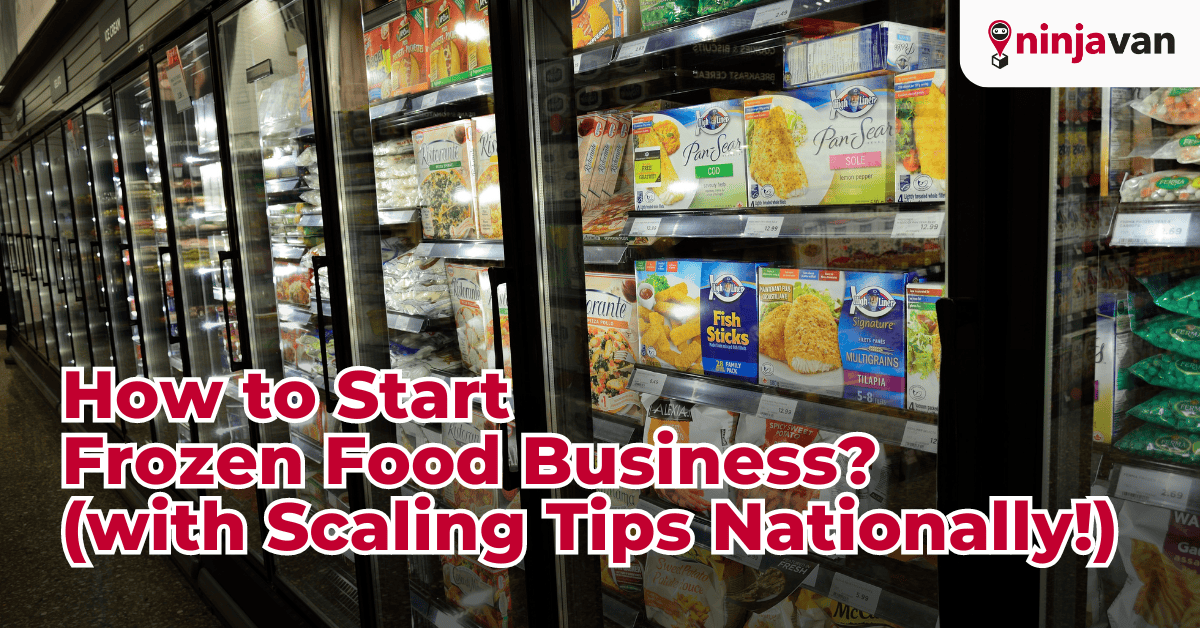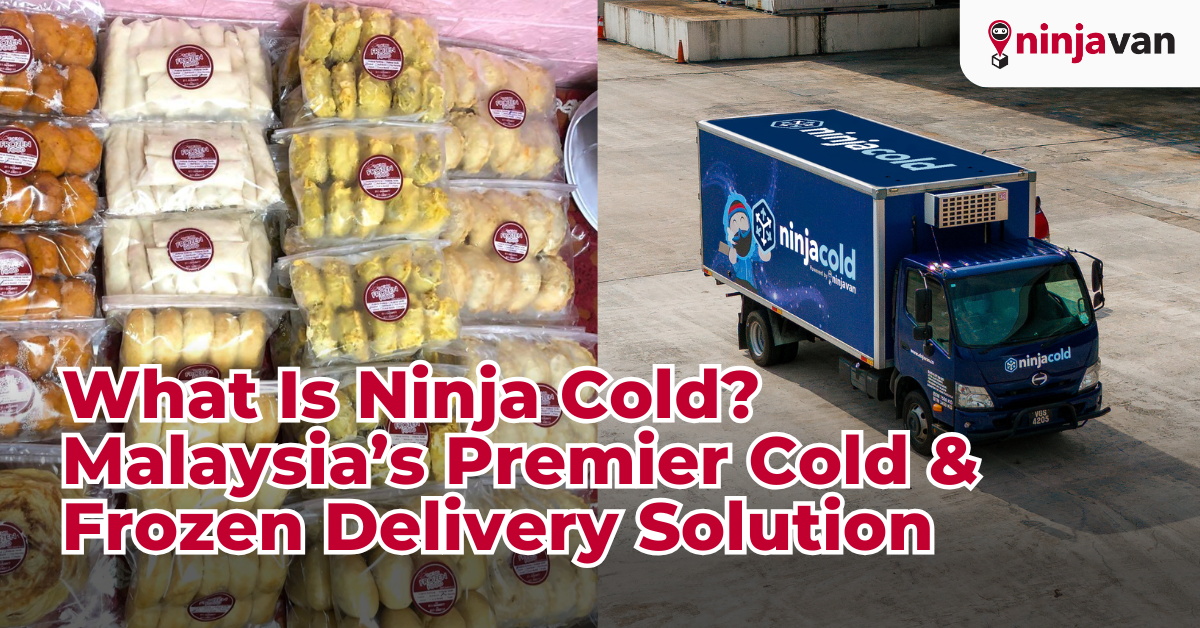Malaysia’s growing appetite for frozen food is a lucrative opportunity. This guide will walk you through starting and scaling your frozen food business in Malaysia. We’ll cover everything from product development to nationwide distribution. Ready to turn your food dreams into a thriving business? Let’s dive in!
#1. Research the Frozen Food Market in Malaysia
Malaysia’s frozen food market is on the rise, driven by factors like busy lifestyles, growing urban population, and a preference for convenience. This presents a golden opportunity for aspiring entrepreneurs.
The Malaysian frozen food market is experiencing robust growth. Factors such as increasing disposable income, changing consumer preferences towards convenience, and the burgeoning foodservice industry are driving this expansion.
Understanding your target market is crucial for tailoring your product offerings and marketing strategies. Consider factors like age, income, lifestyle, and dietary preferences. Are you targeting busy working professionals, health-conscious consumers, or families?
Before diving in, assess the competitive landscape. Who are your main competitors? What are their strengths and weaknesses? Identifying gaps in the market can help you position your business uniquely. Analyse their product offerings, pricing, distribution channels, and marketing strategies to develop a competitive edge.
#2. Create a Solid Business Plan
What sets your frozen food apart? This is where creativity meets culinary expertise. Consider your target audience’s preferences, dietary restrictions, and lifestyle when crafting your product line. Whether it’s gourmet meals, convenient snacks, or ethnic cuisines, ensure your offerings are unique and appealing.
Don’t guess, research! Conduct thorough market research to understand consumer preferences and identify gaps in the market. Surveys, focus groups, and social media analytics can provide valuable insights into what consumers want. This information will help you refine your product concept and tailor it to their needs.
A great product starts with a great recipe. Test your creations on a diverse group of taste testers to gather feedback. An easy shortcut to this is the Taste Testing method, which gathers feedback on flavour, texture, and appeal helps refine products and inform marketing. Pay attention to flavour profiles, texture, and overall satisfaction. Use this feedback to make necessary adjustments and ensure your product is ready for the market.
#3. Understand Halal Certification Requirements
A well-structured business plan is your roadmap to success. Outline your business goals, target market, financial projections, and operational strategies. Consider factors like production costs, pricing, and distribution channels.
Selecting the right legal structure is crucial. Consider factors like liability, taxes, and ownership when deciding between a sole proprietorship or partnership. Consult with a legal professional to determine the best option for your business.
| Business Structure | Definition |
| Sole Proprietorship | A business owned by one person. The business can use the owner’s name or a different name. |
| Partnership | A business owned by 2 to 20 people. The business cannot use the owner’s name. |
Starting a food business involves obtaining necessary licences and permits. Research the specific requirements for your business location and ensure compliance with food safety regulations. This may include:
- Business Premise Licences and Signboard Licence by State Authorities.
- Halal Certification by Department of Islamic Development Malaysia (JAKIM)
#4. Source Quality Ingredients and Suppliers
The quality of your ingredients directly impacts your product’s taste and success. Careful sourcing and efficient manufacturing are essential for delivering a top-notch frozen food product.
- Local vs. Imported: Weigh the benefits of sourcing locally for freshness and supporting the community against the advantages of imported ingredients for specific flavours or cost-efficiency.
- Supplier Vetting: Research potential suppliers thoroughly, checking for quality standards, certifications, and reliability.
- Building Relationships: Establish strong relationships with suppliers to ensure consistent product quality and timely deliveries.
- In-House or Outsourcing: Decide whether to manufacture your products in-house or outsource production to a co-packer. Consider factors like production volume, expertise, and cost. Who is a co-packer? A co-packer is a company that packages and labels products for other businesses. They can also handle tasks like cooking, blending, and processing ingredients. Some co-packers even manufacture the entire product before packaging it.
- Food Safety First: Prioritise food safety throughout the manufacturing process. Adhere to strict hygiene and sanitation standards, for example, Ministry of Health Malaysia’s Food Hygiene Regulation 2009.
- Equipment and Technology: Invest in appropriate equipment and technology such as full range commercial kitchen equipment and food processing machines to streamline production and maintain product quality.
#5. Invest in Proper Storage and Packaging
Packaging is more than just a container; it’s a powerful marketing tool. In fact, a study shows that highly creative packaging sparks customer curiosity. Less creative designs don’t have the same effect. People respond differently to creative packaging based on its level of originality.
Very creative packaging grabs attention better than less creative packaging. Packaging that is both creative and relevant generates the most curiosity. This is especially important in retail where customers often make quick decisions.
Hence, a well-designed package protects your product, attracts attention, and communicates your brand message. Here are thing that you can do:
- Invest in eye-catching packaging that reflects your brand identity. Use high-quality materials and design elements that resonate with your target audience.
- Ensure your packaging provides adequate protection during transportation and storage. Consider factors like product size, weight, and fragility when selecting packaging materials.
- Comply with labelling regulations and provide essential product information, including ingredients, nutritional facts, and usage instructions.
- Use packaging as a platform to reinforce your brand message and values. Create a consistent look and feel across your product line to build brand recognition.
#6. Implement Effective Marketing Strategies
Effective marketing and sales strategies are essential for building a successful frozen food business. By understanding your target audience and utilising the right channels, you can create a strong brand presence and drive sales.
Identify your ideal customer and tailor your marketing efforts accordingly. Understand their needs, preferences, and buying behaviour to create compelling messages that resonate with them. You can start off by asking yourself these questions;
- What specific problem does your product solve for them? (Product core value)
- How can you effectively reach your target audience? (Marketing channels)
- Where do they typically shop for this type of product? (Distribution strategy)
- What is the easiest way for them to buy your product? (Customer convenience)
- How much are they willing to pay for your product? (Pricing strategy)
Develop a strong brand identity that reflects your product’s unique qualities and values. Use storytelling to connect with your audience on an emotional level and build brand loyalty. One of the best brand storytelling formulas is the Five-Act Structure.
Utilise digital marketing channels to reach a wider audience. Build a strong online presence through your website, social media, and email marketing. A study reveals that:
- Malaysians primarily use search engines (55.6%) and social media (52.6%) to find out about brands.
- Consumer reviews (43%) also significantly impact brand perception.
- Having a website (39.7%) is crucial.
- Mobile-friendly approach is essential as 33.7% of users rely on mobile apps for information.
Hence, creating engaging content, running targeted advertising campaigns, and optimising your website for search engines is crucial for maintaining or scaling up your business.
Don’t underestimate the power of traditional marketing methods. Explore opportunities for partnerships with retailers, distributors, and foodservice establishments. Attend industry events, participate in food exhibitions, and leverage public relations to increase brand visibility.
Develop a robust sales strategy to reach your target market. Build strong relationships with retailers and distributors to secure shelf space. Consider direct-to-consumer sales through online platforms or your own retail outlets.
#7. Scale Your Business Nationally
Expanding your frozen food business nationwide requires careful planning and execution. Of course, there is no single answer on how much time it would take to make a frozen food to generate profit nationwide, but Fandbee invested RM100mil for expansion nationwide. By focusing on key areas such as logistics, distribution, and marketing, you can successfully reach a wider customer base.
Preserving product quality is paramount in the frozen food industry. A robust logistics and distribution system is essential to maintain the cold chain integrity. Consider partnering with specialised third-party logistics (3PL) providers equipped with temperature-controlled transportation solutions. These providers often have established networks and expertise in handling perishable goods, ensuring your products reach customers in optimal condition.
To achieve national distribution, explore various channels such as partnering with wholesalers, distributors, or retailers. Evaluate the pros and cons of building your own distribution network, considering factors like investment, control, and scalability. Collaborating with established partners can expedite market penetration and reduce operational burdens.
Effective marketing is crucial for building brand awareness and driving sales nationwide. Adapt your marketing messages to resonate with diverse regional preferences while maintaining brand consistency—for example, how Ikea uses dialect to promote their new Malaysian stores. Utilise digital platforms to reach a wider audience and leverage data analytics to understand consumer behaviour in different regions.
Wrapping Up!
Starting a frozen food business in Malaysia is an exciting venture with immense potential. By following the steps outlined in this guide, you can lay a solid foundation for your business and increase your chances of success.
Remember, a well-executed cold chain is the backbone of any frozen food business. Partnering with a reliable logistics provider like Ninja Cold can be a game-changer. With our expertise in temperature-controlled transportation and extensive nationwide network, we can help you overcome the challenges of delivering frozen products such as karipap frozen, frozen french friends, fresh meats and poultries, burger patties and others, to customers across Malaysia.
Ready to embark on your frozen food journey?
Contact our experts today to discuss your product and business type. We’ll provide tailored solutions to help you get started. Enjoy the flexibility of our temperature-controlled deliveries, ranging from 25 degrees Celsius to -20 degrees Celsius, ensuring your products arrive in perfect condition.







